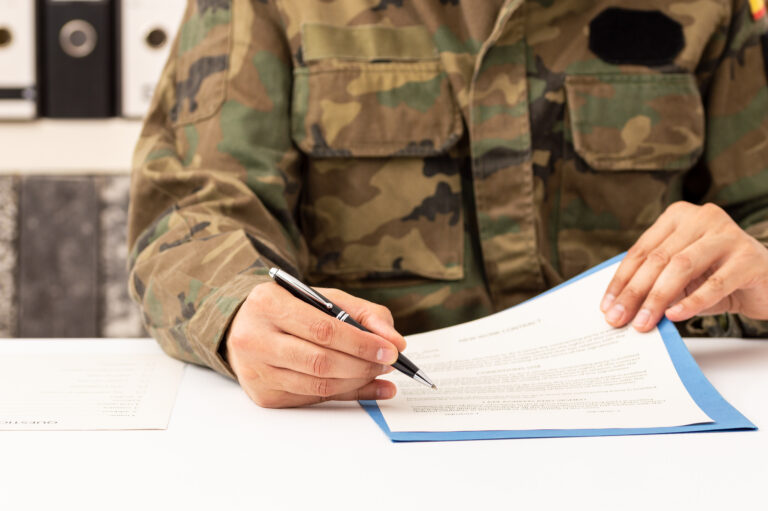DoD CAC vs. Other Military ID Cards
The Department of Defense (DoD) Common Access Card (CAC) is a smart card issued to active-duty military personnel, civilian employees, and eligible contractor staff. It’s more than just an ID, serving as a key to securely access buildings, computers, and networks. While vital, it’s not the only military ID in circulation, as other branches and categories of military personnel use different types of cards.
Features and Functions of the DoD CAC
The CAC stands out for its multifunctionality. It includes a microprocessor chip holding various types of data. This ranges from personal info and credentials to digital certificates. The chip makes the CAC an indispensable part of military daily operations. It’s used for both physical access to facilities and logical access to secure networks and systems.
Issuance of the CAC is tightly controlled. Applicants must go through a thorough identification process. This includes biometric data such as fingerprints. The high-security standards help in preventing unauthorized access, safeguarding sensitive data from potential breaches.
Comparison with the Uniformed Services ID Card
Another prevalent military ID is the Uniformed Services ID Card, often issued to retirees and dependents. Unlike the CAC, it lacks the embedded chip technology. It primarily serves as proof of the bearer’s relationship with the Department of Defense. Functions are more limited compared to the CAC, usually restricted to access certain military benefits and services.
Despite the overlap in identification purposes, the Uniformed Services ID Card doesn’t grant network access or serve as a key to secure facilities. Its expiration terms also differ, often dependent on the administrative category of the cardholder (retiree, dependent, etc.). The simplicity of this card makes it easy to issue but limits its utility.
Transitioning from One Card to Another
Individuals often transition between different types of military ID cards. For example, an active duty member might start with a CAC. Upon retirement, they switch to a Uniformed Services ID Card. This transition requires returning the CAC for deactivation and completing necessary paperwork for the new ID.
The processes are robust to ensure a seamless changeover that maintains security integrity. This approach minimizes the risk of retaining outdated or unauthorized access while ensuring that former service members continue to receive their benefits and services without interruption.
Comparing with Contractor Identification Cards
Military contractors use an array of identification cards, depending on the nature and location of their work. When it comes to contractors working closely with DoD, they are often issued CACs, given their extensive interaction with secure systems and facilities. Other contractors working in non-sensitive locations may receive simpler ID badges.
- Applying for a CAC involves additional checks and verifications compared to standard contractor badges.
- The enhanced security features of the CAC ensure that contractors are carefully vetted.
- Non-classified environments might not require the same level of security, explaining the variance in ID types.
The distinction also hinges on the need for access credentials. A high-level consultant working directly with sensitive military projects will need a CAC, while a maintenance contractor might only need a basic badge for facility access.
Digital Certificate Integration and Authentication
The CAC integrates with Public Key Infrastructure (PKI), enhancing security by providing digital certificates for authentication, encryption, and digital signatures. This security feature is not found in other military ID cards, rendering the CAC superior in cyber defense. Digital certificates are used for:
- Logging into secure computer networks
- Signing official documents electronically
- Secure email communication
This PKI integration helps in identifying and granting access exclusively to genuine users, minimizing cyber threats and vulnerabilities. Additionally, it plays a crucial part in digital engagements within the military ecosystem.
Physical Access
The CAC serves as a multi-purpose card for physical access to buildings and controlled areas. Facilities equipped with card readers scan the CAC, verifying the holder’s identity before granting entry. While the Uniformed Services ID Card and simple contractor badges can also provide entry, their lack of embedded security features makes them less versatile.
Access determined by the type of ID card also affects troubleshooting and security protocol. Lost or stolen CACs invoke immediate revocation and replacement, a process generating a notice to involved systems and facilities for enhanced security tracking.
Using Other Military Identification Overseas
U.S. military personnel stationed or deployed overseas require their identification cards for various purposes. Whether using a CAC or a Uniformed Services ID Card, these IDs ensure access to U.S. bases, commissaries, and assorted services. Overseas contractors and their IDs may vary, affected by host country agreements and security needs.
Different identification cards thus play into international logistics and security management, underscoring the necessity for distinct issuance criteria and use-case scenarios. The unique challenges of international deployments demand robust ID policies adaptable to local and operational requirements.
Upcoming Technological Advancements
Innovations are always in the pipeline for military identification technology. There’s ongoing research into enhancing secure features and expanding functionalities. Mobile ID options leveraging smartphone technology could one day complement or replace physical cards. Biometric authentication might also see broader integration.
This forward-looking approach aims to bolster security while streamlining processes. It aligns with trends for increased cybersecurity and operational efficiency. Awareness and adaptation to these technological shifts are vital for maintaining the DoD’s edge in secure identification.
Interoperability with Allied Forces
Military ID cards, including the CAC, must sometimes interface with allied force systems. Joint operations and allied bases necessitate recognition and compatibility. Interoperability efforts enhance collaborative readiness and can streamline joint missions.
The complexity of international military cooperation requires adaptable identification tools. Ensuring CAC and other military IDs meet these interoperability standards is key for integrated defense efforts.
CAC Revocation and Reissuance
Revocation and reissuance processes for the CAC are stringent. Loss, theft, or expiration of the card necessitates prompt action. Strict protocols ensure unauthorized access is minimized during these events.
Reissuance involves validation through the Defence Enrollment Eligibility Reporting System (DEERS). New cards are issued rapidly but securely, emphasizing the blend of efficiency and safety key to military operations. Such processes highlight the paramount importance of controlled and streamlined transitions between card statuses.
Conclusion
“`






